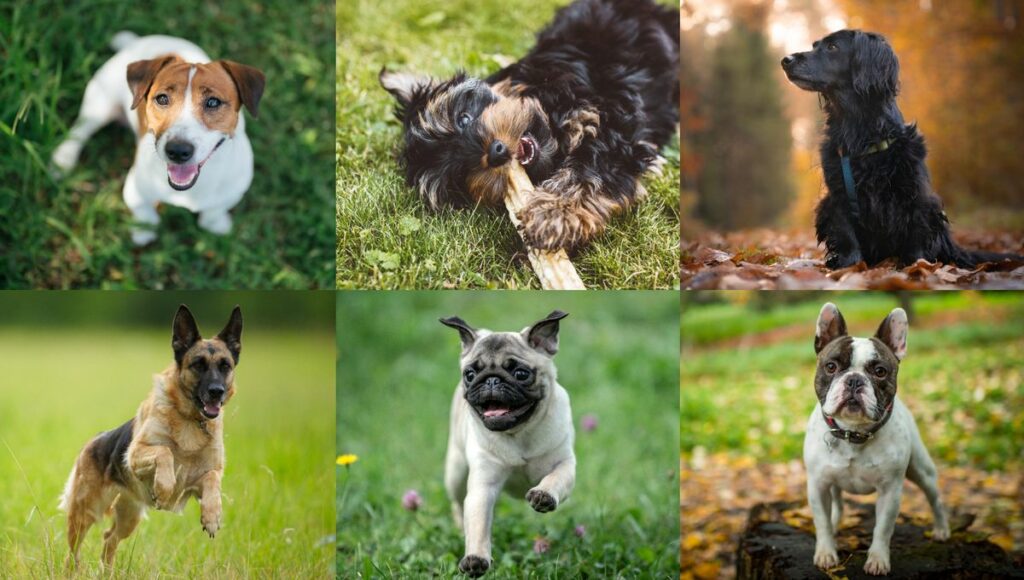A British study conducted by the Royal Veterinary College on 30,000 pet dogs establishes the life expectancy for 18 different breeds. The Jack Russell and the Yorkshire are among the longest-lived.

Are you about to buy or adopt a dog? One of the legitimate questions to ask is how many years you will share with him. For all breeds, the veterinarian will inform you of an average number of years of life expectancy but great variations exist depending on the country and the genetics. Each of the 344 breeds of domestic dogs listed in the world by the Fédération Cynologique Internationale belongs to a particular country. The « owning » country sets the standard. As saying that the British study conducted by the Royal Veterinary College cannot necessarily be extrapolated to French dogs. Moreover, in previous studies, we can read that a Golden Retriever lives on average 14.1 years in Japan and only 10.5 years in Denmark.
The specificity of this study published in Scientific Reports is that it relates to more than 30,000 individuals of 18 different races died between January 1, 2016 and July 30, 2020. The data comes from the Vetcompass database, a pet health monitoring system, which holds records on 20 million dogs. Of the 97,000 dogs that died during the study, only a small third had a sufficiently complete file for scientific analysis, i.e. mentioning the sex of the dog, its age, its weight, its status of sterilization. Because they needed a minimum number of individuals per race for the robustness of the statistics, the ranking was only able to retain 18 breeds and a group of « crossbred » dogs.
Nearly 13 years of life expectancy for the Jack Russell against less than five for the French Bulldog
According to this study, the Jack Russell has an average life expectancy at birth of 12.72 years, the 12.54-year-old Yorkshire and the 12.10-year-old Border Collie. The Spaniel and the Labrador follow, with more than 11 years of life expectancy, ahead of the Staffordshire, the Cocker and the Shih-Tzu.
At the bottom of the table, a short and massive dog popular with stars: the French Bulldog. With an average longevity of 4.53 years, it will be a treasure for its owners! It shares its low life expectancy with other flat-faced dogs including the Pug. The German Shepherd is placed in the average (10 years) and the crossbred dogs a little above (11.82 years).
For Jean-Christophe Vuillerme, veterinarian in the Lyon region, « there are races that live longer than others. Smaller breeds tend to live longer. There are also breeds selected with very specific criteria, such as short noses in Bulldogs, which tend to increase the risk of disease and reduce life expectancy.Note that, as in humans, females live longer than malesexcept in the case of sterilization.
Differences in longevity
However, these indicators are not the alpha and omega of a dog’s life! If some races suffer from genetic diseases, respiratory problems or skeletal weakness that limit their survival, some individuals within the same race may have a longer or shorter life. In the cohort studied, a Bulldog reached 11 years old and a Jack Russel 19 years old. In the Chihuahua, we find the greatest difference (between 1.5 years and 16 years of life). Nevertheless, this study provides statistical data and allows people who wish to buy or adopt a dog to have an idea of the years of life to share. Adopting an 8-year-old dog can lead to losing him quickly or, on the contrary, to offering him a home for as many more years.
« The selection of specific genetic criteria for hundreds of years impacts longevity« , adds Dr. Vuillerme, even if it is induced and involuntary. « Purebred dogs tend to age faster“, he underlines, specifying that certain strains live longer than others. This explains the differences in longevity from one country to another.
For canine mutuals, there is no doubt that this type of table could lead to differentiated prices. Because mortality tables are an essential tool for public health policies in humans. In countries where the health and retirement system is private, they are taken into account to anticipate the cost of old-age insurance or disability pensions. But logically, a dog with good health care increases its life expectancy.

